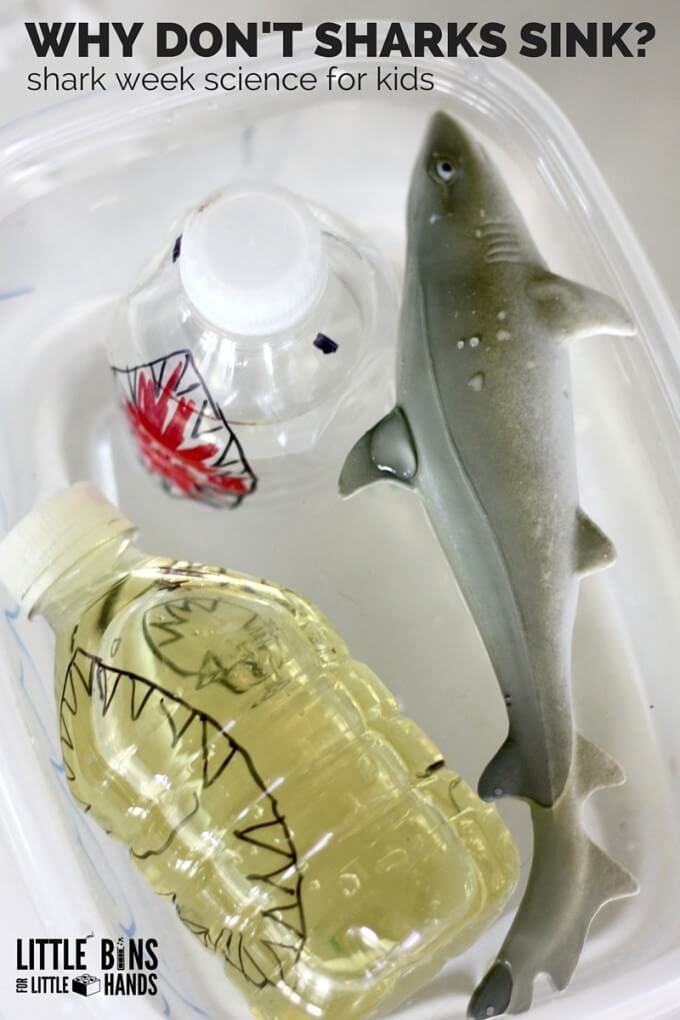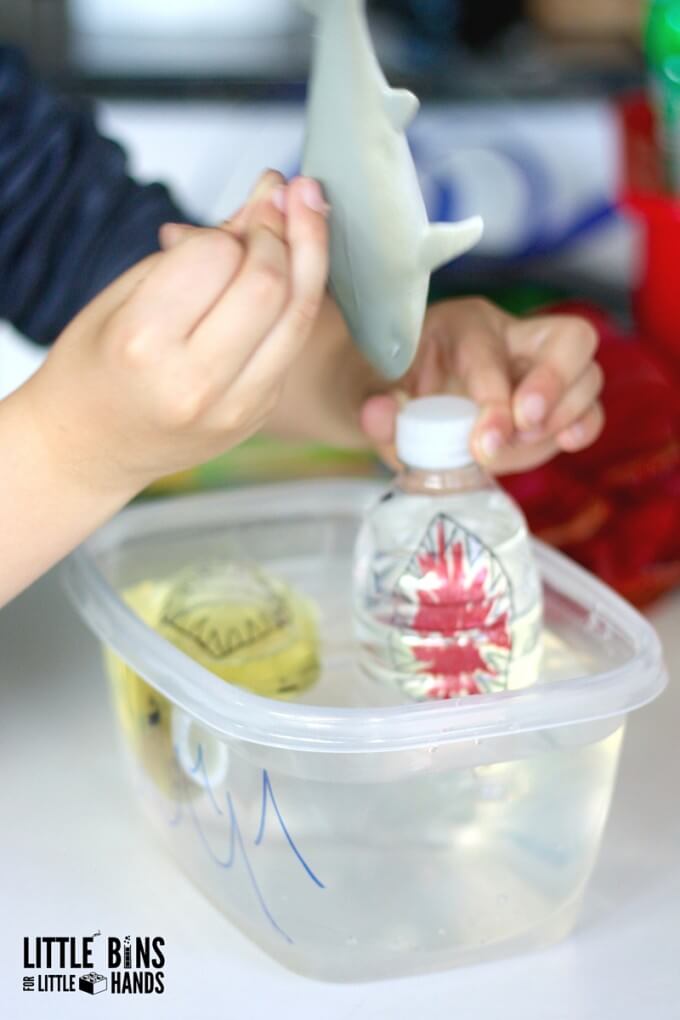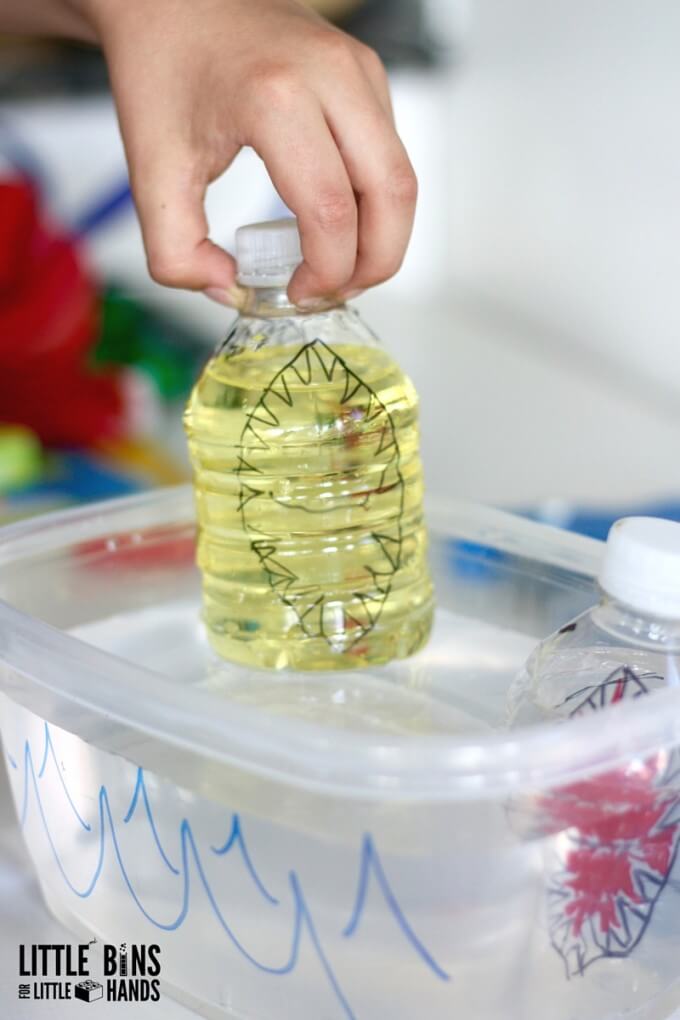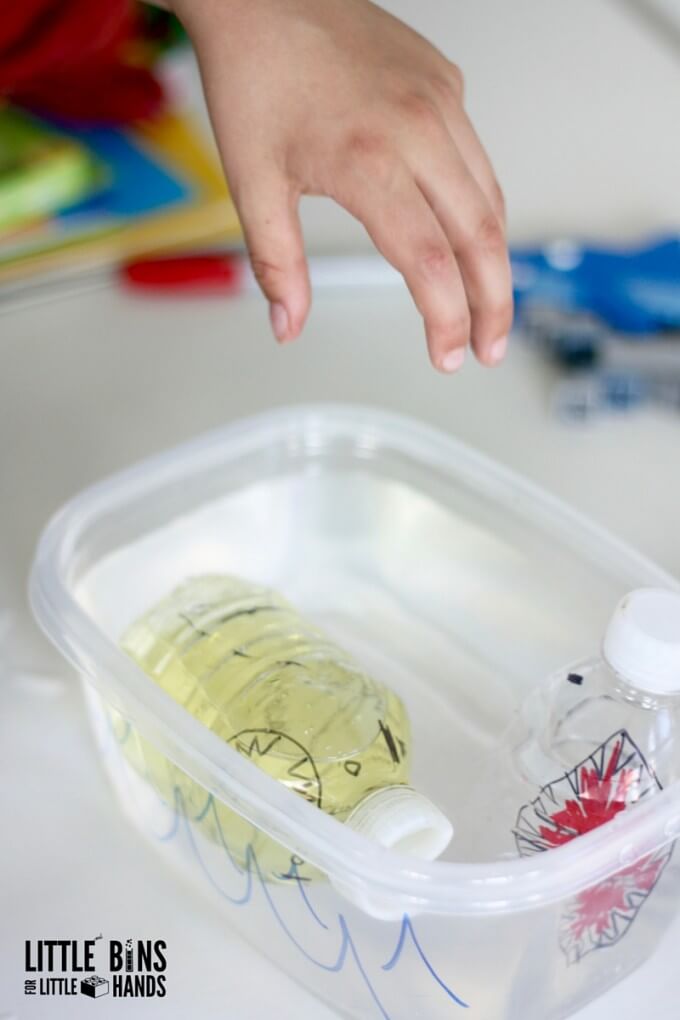

FUN SHARK SCIENCE ACTIVITY FOR KID’S SHARK WEEK STEM
Sharks are buoyant, in other words they don’t sink, but they really could. Buoyancy is the ability to float in water or other fluids. Sharks need to put effort into remaining buoyant. In fact if they stop swimming, they will in fact sink. There are three ways that sharks use their bodies to float. This shark science activity covers one of them, the oily liver! Sharks rely on a pretty big, oil filled liver to help them stay buoyant in water.
This shark science activity is a great lesson in the density of liquids too!
Plus it’s easy to set up with everything you need in the kitchen.

SHARK SCIENCE ACTIVITY SET UP AND SUPPLIES
SUPPLIES:
2 Water Bottles
Cooking Oil
Water
Large Container Filled With Water
Sharpies {optional but fun to draw shark faces}
Plastic Shark {optional but we found it at the dollar store}
SET UP:
Fill each water bottle equally with oil and water. Set out another bin filled with water that is big enough to hold both the bottles and possibly a shark toy if you have one. If you want to get a little crafty, draw a shark face on the bottle. I am not so crafty but managed something that my six year old recognized as a shark.

WILL IT SINK OR WILL IT FLOAT
The bottles represent the shark. The oil represents the oil that is in a the sharks liver. Now make sure to ask your kids what will happen to each bottle as they place it in the bin of water. You can also test out a density tower with multiple liquids.

YAY! THE SHARK FLOATS {OR IS BUOYANT}!
As you can see, the oil filled bottle floats! Which is exactly what the large, oil filled liver of the shark does! It’s not the only way a shark remains buoyant, but it is one of the cool ways we can explore with a density science activity. Oil is lighter than water, which is why the other bottle sunk on us.

WHAT ELSE HELPS A SHARK TO FLOAT OR REMAIN BUOYANT?
Remember I said there were three ways a shark’s body helps him remain buoyant? Make sure to check out my fun shark facts for kids too. Sharks are made of cartilage rather than bone. Cartilage is, you guessed it, much lighter than bone. Now let’s talk about those fins and tail. The side fins are somewhat like wings while the tail fin generates constant movement pushing the shark forward. The fins lift the shark while the tail moves the shark through the water. However, a shark can not swim backward!
Note: Different species use different means to stay buoyant.

A simple and fun shark science activity for kids! What else sinks and floats around the house? What other liquids could you test out? We are going to be enjoying shark week all week long! Will you?
Original article and pictures take http://littlebinsforlittlehands.com/shark-science-activity-floating-buoyancy/ site
Комментариев нет:
Отправить комментарий